Heuchera is a genus of rhizomatous herbaceous perennial plants of the Saxifrage family. Currently, cultivated species and varieties of this representative of the flora are quite in demand.
Flower Heuchera (Heuchera) came into fashion recently. A few years ago, it was only possible to purchase blood-red geyhera (N. sanguinea). And now many varieties are sold everywhere. The popularity of geyhera is the result of the work of breeders.
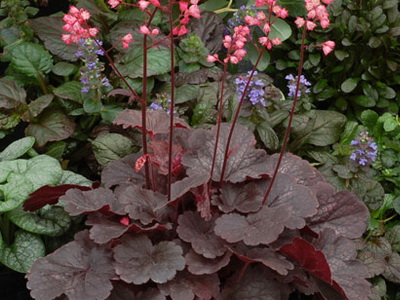
The revolution was the appearance of geyher with leaves painted in bright colors, because in species plants they are green. The palette is so rich that it is impossible not to be tempted. In addition, the leaves do not fade in partial shade. Thanks to these qualities, the range of use of geyher in the garden is very wide.
Heuchera plant: photo and description
The plant blooms with small flowers that look like bells, collected in small inflorescences. Traditionally, the color of the flowers is cream, white and light pink, but recently a wide variety of their options have appeared.
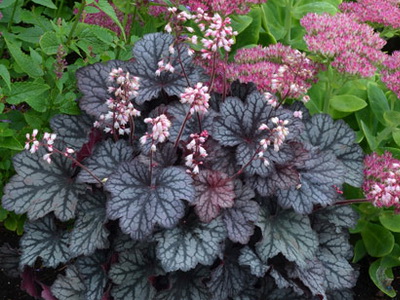
After the geyhera fades, fruits with small seeds are formed at the place of flowering.
The geucher plant received such an unusual name thanks to the name of Johann Heinrich von Geicher, a botanist and doctor. The flowering perennial is native to the rocky regions of North America.
Geyher selection goes in several directions. First of all, of course, plants with an interesting color of the leaf plate are selected – purple, lemon yellow, caramel orange, fiery red, motley.
The shape of the leaf also does not go unnoticed: rounded and elongated, with denticles and rounded tips, smooth and with a wavy edge. Many species have beautiful bright flowers.

Breeders strive to develop plants with compact peduncles and large flowers.

Particularly highly valued in floriculture are specimens with speckled or divorced leaves, which gives the appearance of the plant originality and attractiveness.
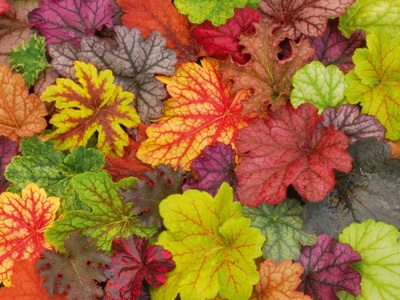
The shape of the bush – a hemisphere – allows you to combine geyhera with most garden plants. These are tenacity, and cuffs, and a variety of irises. It is only necessary to choose a variety so that the color and shape of the leaves either contrast or play on the nuances.
Types and varieties of geyhera flower: photo, name and description
In flower culture, some types of geyhera flower are known.
In garden culture, such types of this flowering plant are known:
Heuchera sanguinea – Blood red . This is the most common type of plant. It has bright red flowers in the form of bells. This species of Heuchera is quite drought tolerant, so it easily takes root in latitudes with a dry climate.

Red geyhera flowers in these photos:
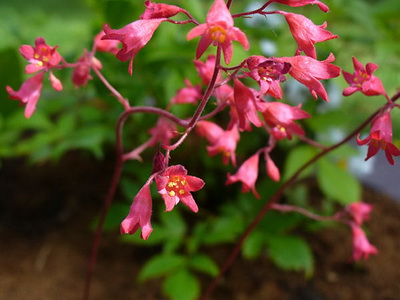


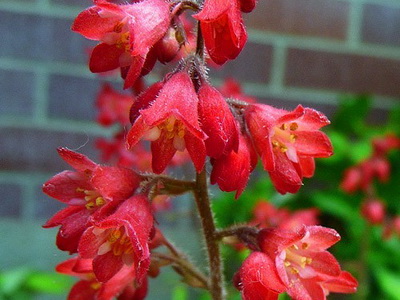
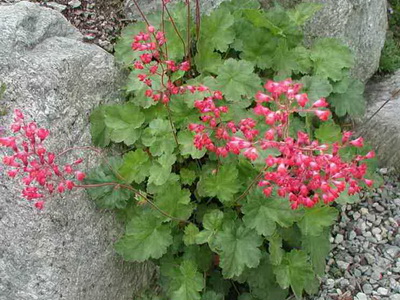
Small-flowered, or Heuchera micrantha . A rather spectacular plant with dark green leaves, decorated with silvery spots, they resemble maple in shape. The plant blooms with creamy pink flowers, collected in paniculate inflorescences on long peduncles.
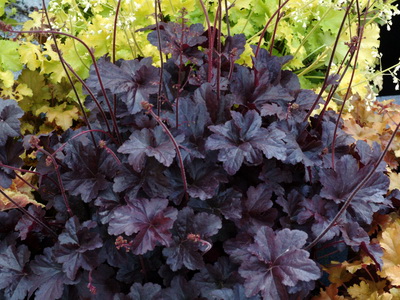
This type of geyhera is shown in the photo below:

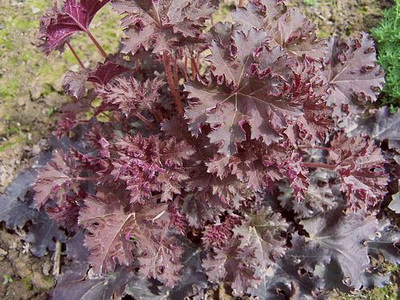
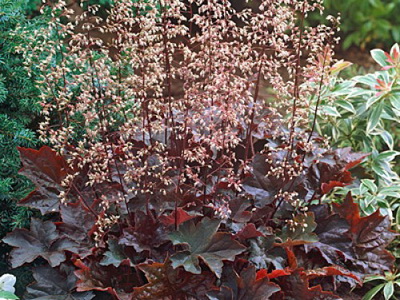
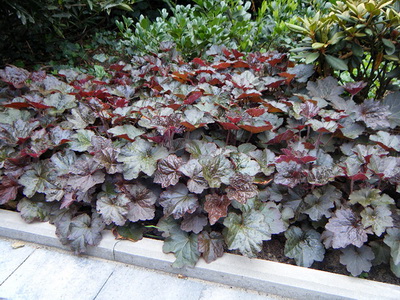
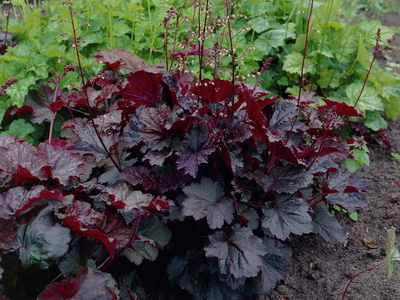
American, or Heuchera americana . In the world of flower growers, it is better known as “mountain geranium”. This species is distinguished by one unusual feature: in conditions of low temperature, pigmentation appears on the leaves. In early spring and late autumn, when the air temperature drops, green leaves are beautifully framed with a red border.
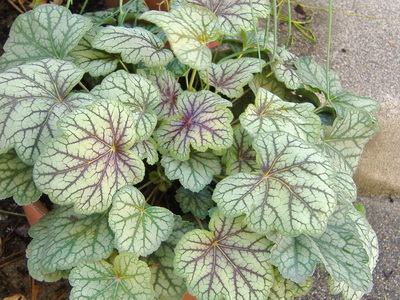
Hairy, or Heuchera villosa . A beautiful bush with large leaves, with peduncles lowered down. In horticultural culture, there are species, leaves, the width of which reaches 20 cm in diameter.

Cylindrical, or Heuchera cilindrica . A species with round, dark green, heart-shaped leaves. A distinctive feature of this variety are silvery patterns and contrasting veins on the leaves. The species has long peduncles, they can reach a height of up to 90 cm. Flowering can be of different colors – white, pink, green or coral.
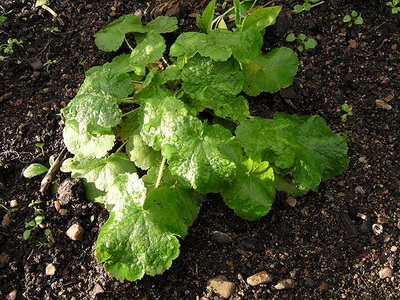
Gooseberry leaf, or Heuchera grossulariifolia . These are small compact bushes no more than 15 cm high, on which small neat leaves are located. This is one of the few species that is not afraid of frost. Heuchera grossulariifolia retains green leaves until spring.

Each type of geyhera has many beautiful varieties. In recent years, breeders have also bred many interspecific hybrids of this perennial plant. All hybrids are distinguished by the splendor of leaves and violent long flowering.
In garden culture, the most popular and in demand in landscape design are the following varieties of geyhera:
hybrid.
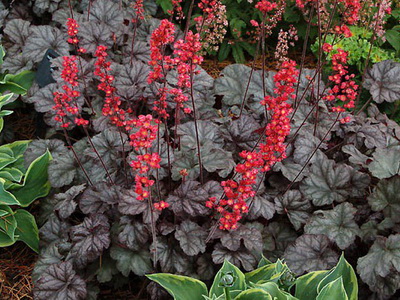
“Caramel”.

“Purple Castle”

“Cappuccino”.

“Amethyst Mist Coral Bells”.
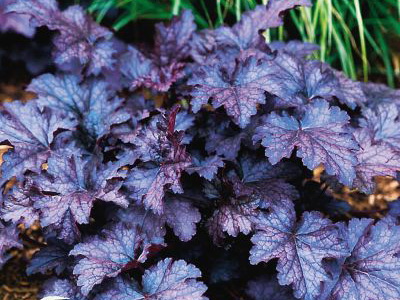
“Marmalade”.

“Regina”.
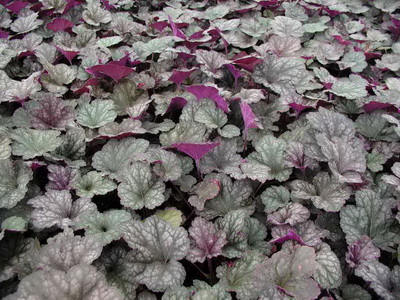
Hybrid Heuchera.

In its appearance, this plant is very similar to the blood-red geyhera. However, the leaves and flowers themselves of the hybrid variety are much larger. Color options for the color of flowers can be different – from white to red. Flowering can last up to several years, but plants rarely bloom for such a long period, because they break under gusts of wind.
This variety of geyhera is shown in the photo below:
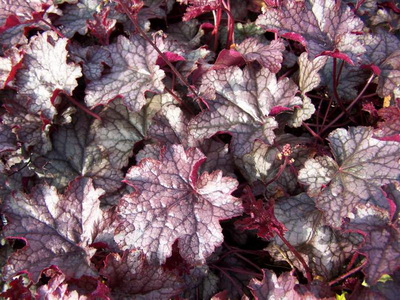

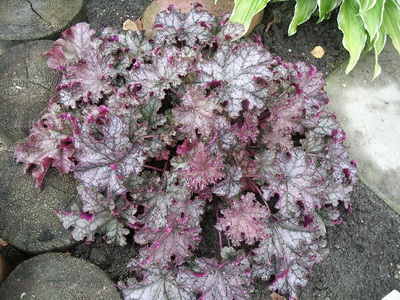


Breeders manage to get more interesting specimens by crossing two species – American geyher and hairy geyher. The hybrid obtained by crossing these two species is characterized by the most beautiful and lush foliage among all the species and varieties of this perennial. The color of the leaves of this variety is varied – brown, purple, purple.
Variety “Caramel”.

This is a fairly large bush, on which a large amount of foliage is located. The homeland of the variety is the southeastern part of North America. “Caramel” has taken root well in both too dry and humid climates.
This variety blooms very rarely, since the geyhera spends all its strength on lush and lush foliage. The color of the leaves is very unusual – honey-yellow, hence the name.
Despite the absence of flowers, the plant looks luxurious, which is why it is popular in landscape design. The ornamental bush reaches a height of up to 30 cm and the same width. Blooms light pink.
A variety of geyher called “caramel” in the photo below:
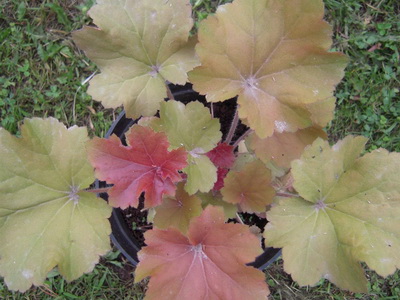

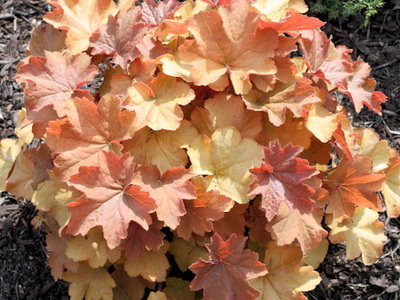
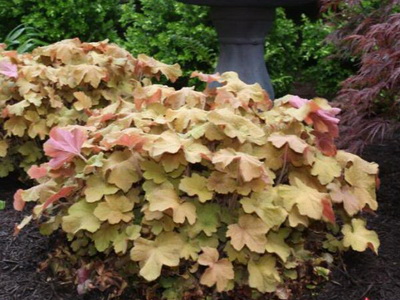
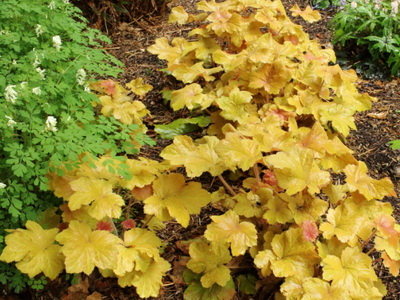
“Purple Castle”
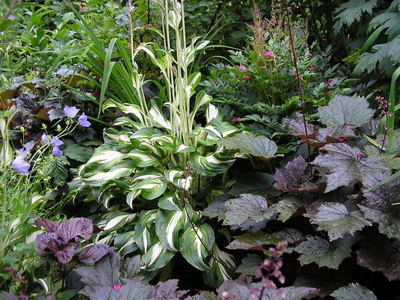
Perennial flowering shrub with ivy-shaped leaves of a dark purple color. Whole compositions of these plants look beautiful. The flowers are in the form of bells, collected in small inflorescences. They also look good in cut form, often used to create floral arrangements. Put in a vase, they will decorate any interior.
On the stems of the plant are long white hairs that turn brown when dry.
Type of geyher called “Purple Castle” in this photo during flowering:


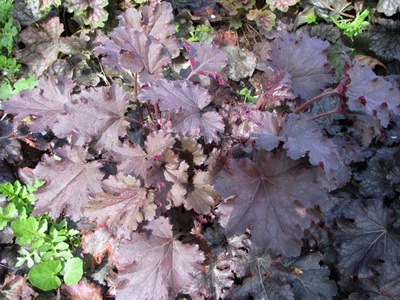
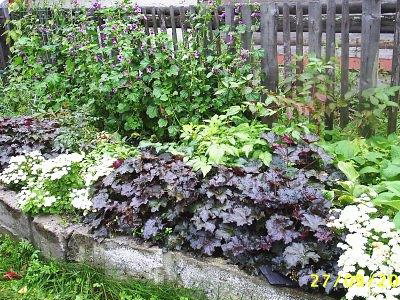
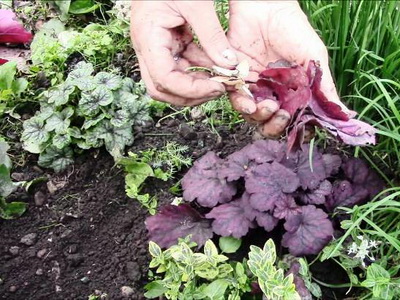
“Cappuccino”.
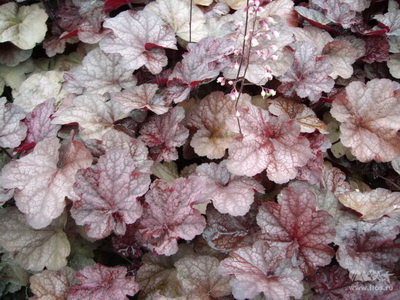
Description of the geyhera variety “Cappuccino”: an evergreen bush with small leaves of a round shape of a bronze color, purple below. The flowers are tubular, collected in inflorescences, which are in the form of a brush or a small panicle. The flowers are usually white with red calyxes.
Other varieties of geyhera and photos of plants during flowering
In floriculture and landscape design, other varieties of geyhera are also widely used.
You can see many other types and varieties of geyhera in this photo:
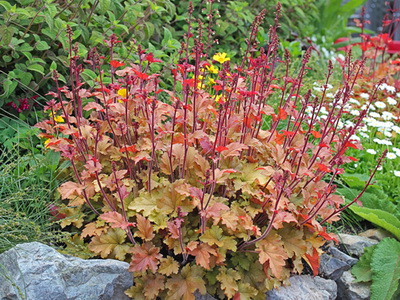

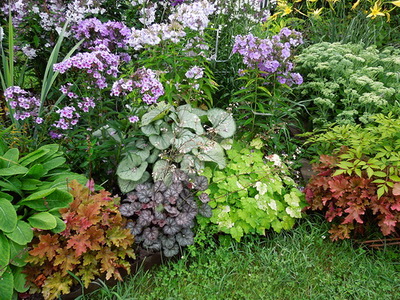
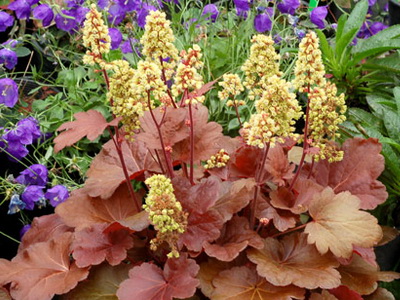
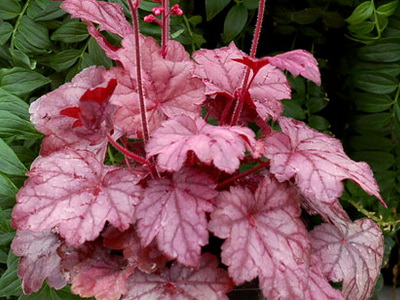
The following varieties of flowering shrubs are popular:
“Marmalade” (Marmelade) . A variety of this flowering garden plant is distinguished by attractive yellow-orange leaves. The leaves are light purple underneath. Marmelade flowers are small, greenish, located on peduncles 25-35 cm long. The variety blooms in mid-summer – from June to July.
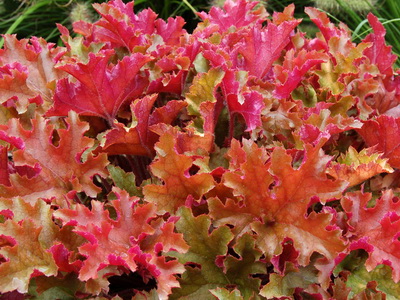
This variety of geyhera during flowering in the photo below:




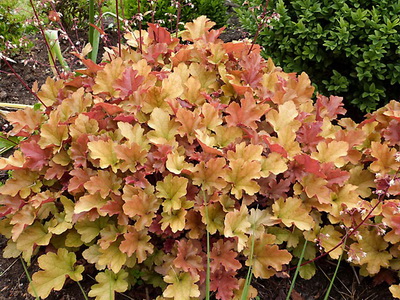
“Regina” (Regina) . It attracts attention with the unusual color of the leaves – silver-gray with a bluish-lavender tint. The leaves of this variety are characterized by dark venation. It blooms in a pale pink color, the flowers are located on high peduncles – up to 40-60 cm in length. Regina blooms in May and blooms until July.

“Amethyst Mist Coral Bells” . A plant with such an exotic name is distinguished by dark purple leaves with an attractive glossy surface. The veins are silvery in color, creating a cobweb effect on the leaves. The bush is small, usually its height does not exceed 20-25 cm.
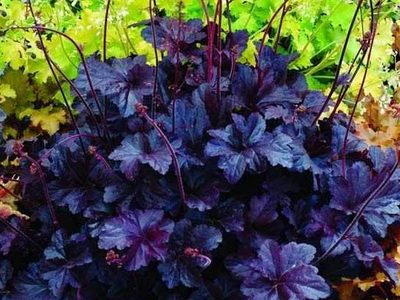
Pay attention to this variety of geyhera plant in these photos during flowering:

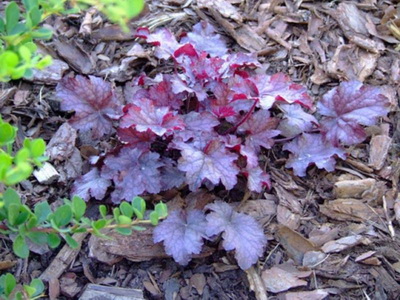
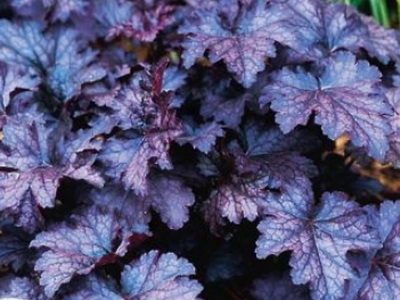
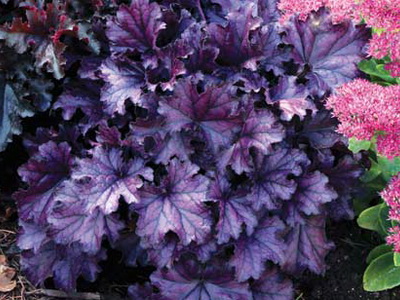
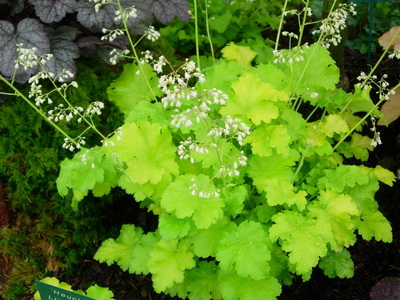
“Lime Rickey” . Description of this variety of geyhera: a small ornamental bush with beautiful dark green glossy leaves and beautiful creamy white lacy flowers. The bush blooms for several weeks at the beginning of summer. Peduncles in the variety “Lime Riki” can reach a height of 60-65 cm.

All these varieties and types of geyhera with various names can be found in the photo below:


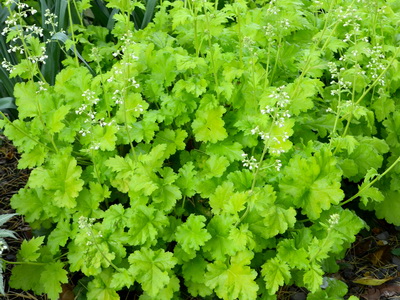


Planting geyhera in open ground
Plants are equally unfriendly with dampness and drought. In damp places they rot. They can live in dry ones, but it is necessary to provide watering. For this reason, it is best to plant geyhers in well-drained soil somewhere in partial shade.
Closely related to the geyhera tiarella.

In gardens, you can find tiarellus cordifolia (T. cordifolia) and its variety ‘Ninja’.
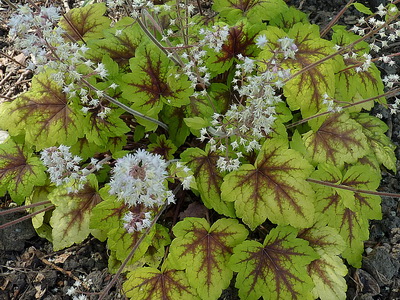
Geykherella (Heucherella) – a hybrid of geyhera and tiarella. These plants have beautiful leaves of various shades, often with a bright stripe along the veins, and flowers that are large compared to geuchera.

In culture, tiarella and geucherella behave almost like geucher. The difference is that geyherella are more durable, that is, they can grow in one place without dividing and cuttings for several years.

The initial step in planting and caring for geyhera in the open field is to choose the most suitable place. Given that the plant tolerates shade well, the eastern or western part of the garden will be a suitable place for it.

Professional flower growers recommend planting these garden flowers in the shade of other representatives of the flora.
You should not plant only varieties with bright colors of leaves in the shade, as in the sun they will become more saturated and attractive. Heuchera with red leaves should be planted only in the sun, if you plant it in the shade, the leaves will remain green.
An important point in planting and caring for a garden flower is the proper preparation of the soil for planting. This representative of the flora grows well in almost any soil, but does not tolerate acidic soils. In order for the plant to develop quickly and bloom, it is advisable to plant it in fertile and loose soils. You can also choose heavy clay soils for planting, but be sure to add sand and peat to them.
The plant does not tolerate stagnant water, therefore, at the stage of planting it in the ground, good drainage should be ensured. Neglect of this rule can lead to stagnation of moisture in the roots – and their decay.

Landing is carried out in the spring – in March or April. In the garden, plants are planted with seedlings or seeds.
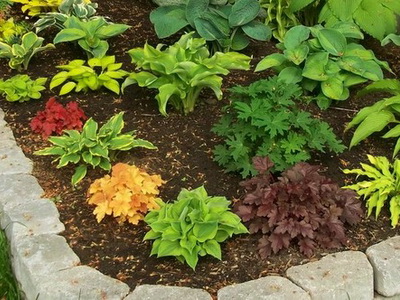
How to grow geyhera: planting seeds
Growing geyhera from seeds is easy, but long. Seeds are small, sprout in the light quickly and amicably. Tiny seedlings need to be protected from the “black leg” and pruned in time when a few leaves appear. In less than a year, the seedlings will turn into full-fledged plants. True, it is impossible to preserve the grade when sowing seeds, with rare exceptions.
Growing geyhera from seeds is a rather lengthy process. In addition, it is less in demand than growing from seedlings, since the seeds do not retain the characteristics of the species. When buying seeds in a store, be sure to pay attention to the date of packaging, since germination persists for six months from the moment they ripen.

For planting seeds, geyhera uses a wide bowl with drainage holes, the height of the container should be about 5 cm. For this purpose, you can use any plastic container. The soil for planting seeds must be loose, the germination of plants depends on this soil criterion. Perlite or coarse sand is added to the prepared soil. To destroy harmful microorganisms, the soil before planting seeds in it is heated in the oven for about 5-7 minutes or poured with boiling water.
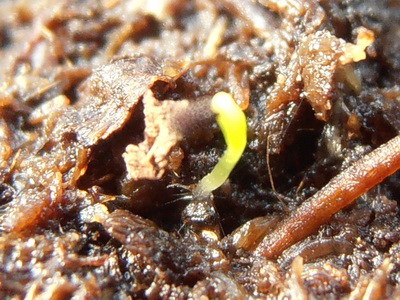
Seeds should not be too deep into the ground, they are very small and will germinate for a long time if planted deep. To achieve uniform seed germination, they are mixed with sand and sown on top of moistened soil, which must first be leveled. The top soil with seeds is covered with plastic wrap or thin glass to get a greenhouse effect.
Growing geyhera from seeds at home (with video)
How to quickly grow geyhera from seeds at home? For faster germination of geyhera seeds, it is important to provide enough sunlight. To do this, you need to put the seed container on the windowsill, where the sun’s rays fall, but it is important to exclude the formation of drafts in the room.
Seeds also need air to germinate; for this, the soil should be ventilated periodically by removing the film or glass.
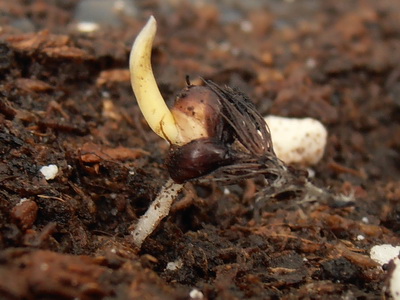
When favorable conditions are created, the first seedlings of plants will appear in about 2-3 weeks. After the appearance of the first sprouts, the glass is lifted, and small holes are made in the film for air to enter. When 1-2 leaves appear on the sprouts, they are seated at a distance of 6 cm from each other.
You can familiarize yourself with the features of growing geyhera from seeds when watching this video:
Heuchera breeding
Most often, geyhera propagation is carried out by seedlings or delenki obtained as a result of dividing the bush. Usually, all plant varieties retain their attractiveness for no more than three years; in the fourth year of using geyhera in landscape design, the bushes must be planted in a new place.

An adult plant must be dug up and divided into parts, while each division must have its own roots. Having planted seedlings in a permanent place, they are provided with abundant watering and shade well.

It is necessary to carry out reproduction by dividing the bush into seedlings in early spring or autumn. It is necessary to plant delenki a little deeper than the mother plant was planted.
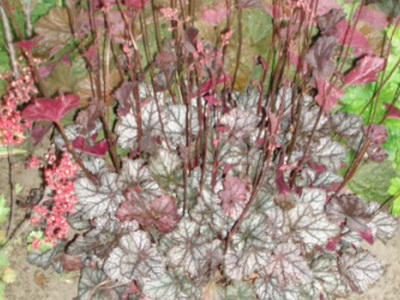
When growing geyhera in the garden, flowering bushes are propagated by cuttings. To do this, in the summer, a cutting 4-5 cm in size is cut from a bush and rooted in a greenhouse. The rooting process takes about 3-4 weeks, when the root is formed in the plant, it can be planted in a permanent place.
Heuchera care in the garden
Under natural growing conditions, when the plant species had not yet been cultivated by man, geyhera grew on stony, rather poor soils. Most modern varieties also tolerate nutrient deficiencies quite easily.
When growing a garden flower, fertilizers are rarely recommended.
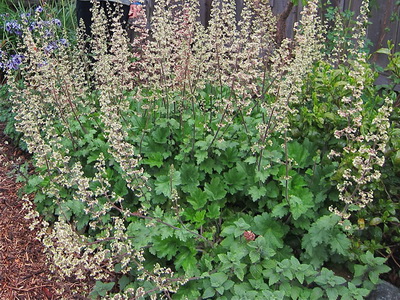
Professional flower growers recommend fertilizing the soil once in the spring a year after planting.
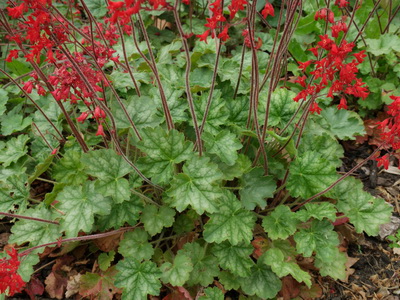
If for some reason it was not possible to fertilize in the spring, top dressing is carried out at the end of the growing season, fertilizers for deciduous plants are used. After fertilizing, it is necessary to water the bushes well.

Heuchera is one of the most popular and beloved plants by many gardeners, not only because of its attractive appearance and great variety.
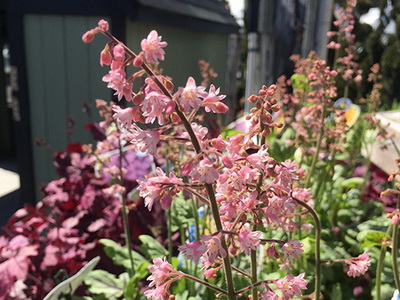
This plant is practically not affected by pests and the development of diseases. Occasionally, geyhera, with improper care, can suffer from powdery mildew, rust, gray rot, and leaf spot.
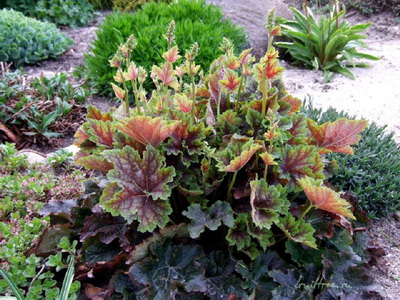
The reproduction of such pests is the result of excessive watering of plants or insufficient drainage of the soil. Excessive use of fertilizers also does not benefit garden plants; geyhera’s immunity decreases and it becomes vulnerable to many pathogenic microorganisms.

If powdery mildew is found on the leaves and stems of the plant, they must be sprayed with a fungicide solution, removing all diseased leaves. To combat spotting and rust, it is necessary to use Bordeaux liquid.
Among the pests, the most dangerous for all varieties of geyhera are the larvae of the May beetle. They damage the roots of garden plants.
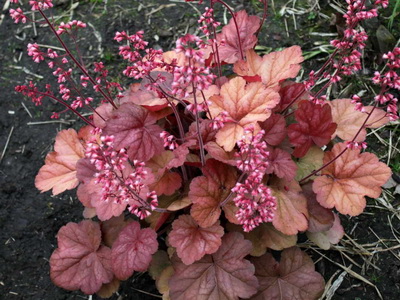
Heuchera can also suffer from garden snails, slugs, caterpillars and leaf nematodes. In the fight against these parasites, flower growers use insecticides.
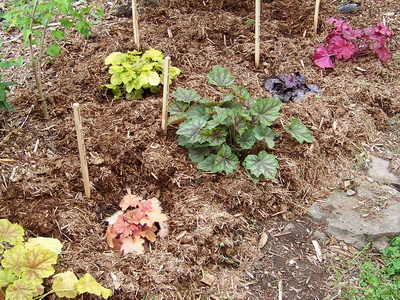
Geyhers in the landscape design of the garden and a photo of flowers in a flower bed
As a rule, flower growers plant geyhers in groups in the garden, creating beautiful flower arrangements from different varieties of this plant, or combine them with other garden crops.

Heucheras look great in compositions with astilbes, cereals, daylilies and primroses.

A variety of options for using geyhera in garden landscape design in these photos:

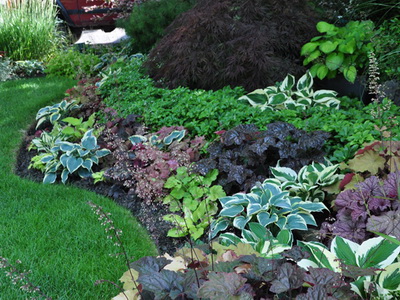

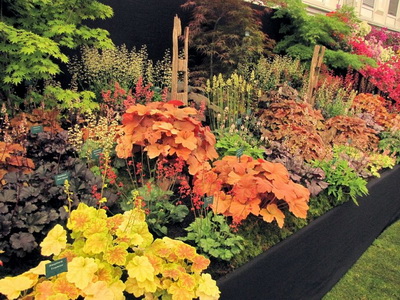

Many varieties of plants look great in solitary plantings.

In order for geyhers to create beautiful ensembles in the garden, it is necessary to combine different bushes according to the color of leaves and inflorescences.

Magnificent compositions will be obtained by combining contrasting plant colors – dark-leaved (burgundy, purple and purple) with rich, but lighter plants (golden, lemon yellow, salmon).

This option for using geyhera in garden landscape design is shown in the photo below:

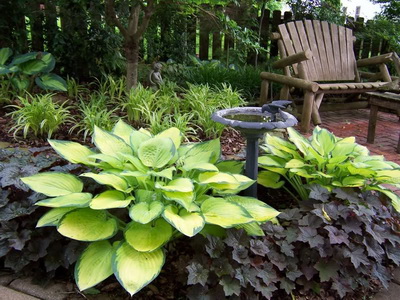
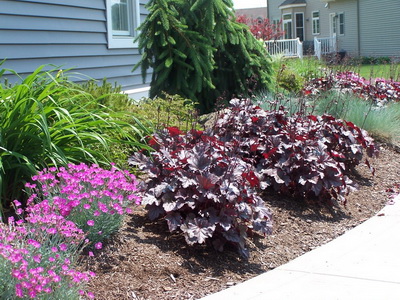

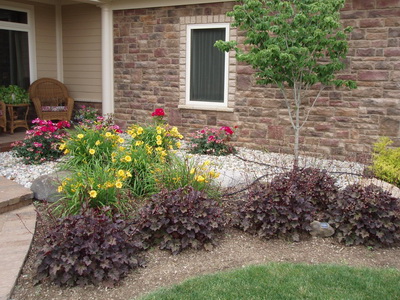
Flower beds from geyher flowers of the same color, but of different colors and textures of leaves, also look no worse.

Magnificent compositions are obtained in which the transition of shades is traced – from lighter to darker and vice versa.
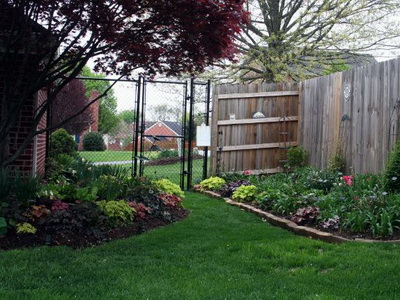
You can plant geyhers in the following sequence: purple, maroon, red, scarlet, salmon and pink.
You can see this option for planting geyher flowers in a flower bed in the photo below:

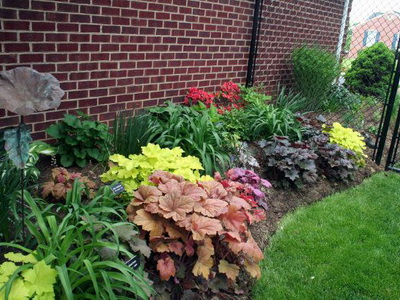

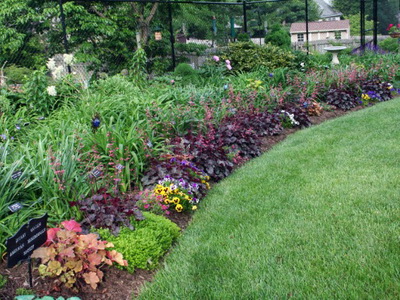

In single plantings, bright geyhers are used to decorate borders, and they are also often planted along garden paths.

Geyhery are widely used in garden landscape design when creating alpine slides, especially if they are placed in the foreground of the rock garden.
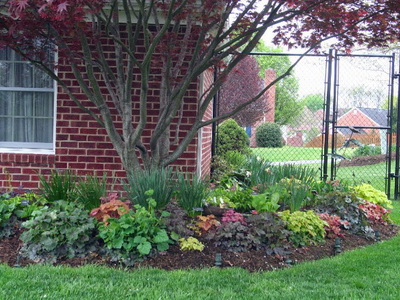
Daylilies, low coniferous and deciduous ornamental shrubs will make a beautiful composition with them.
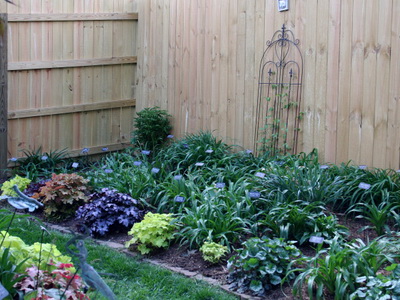
You can find other useful information about the geyher garden plant when watching this video:







